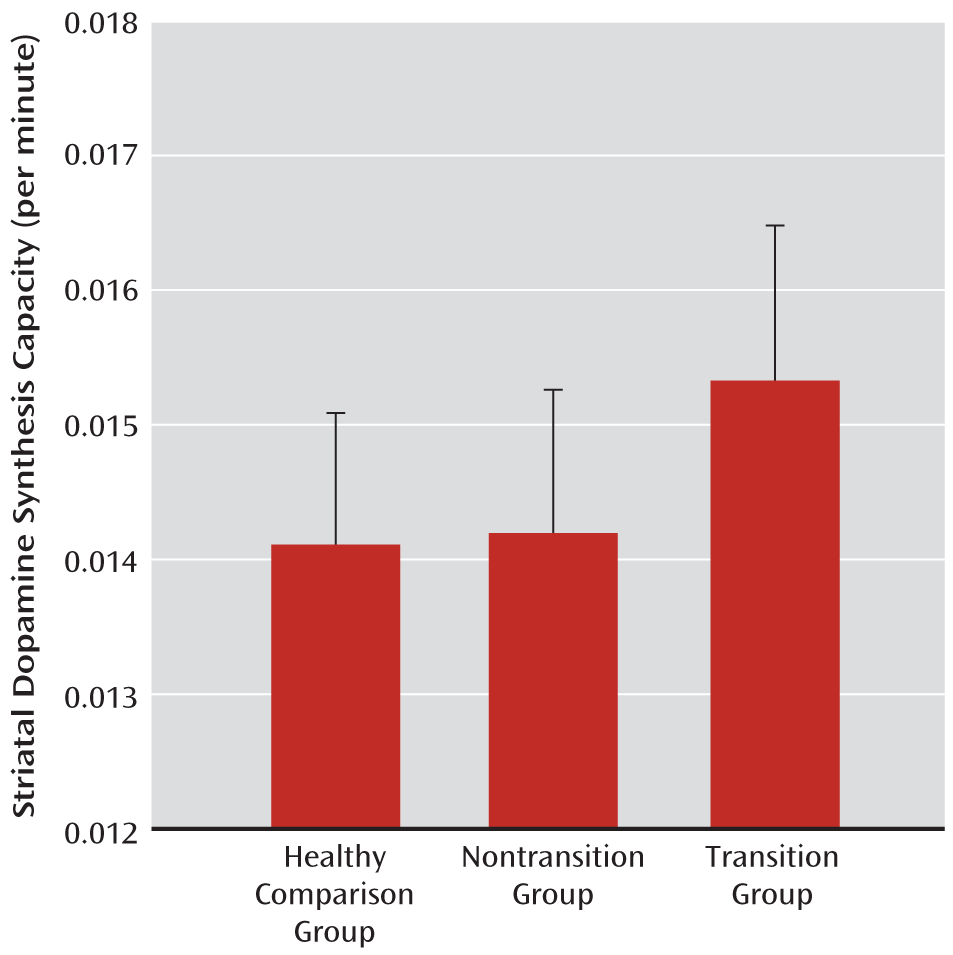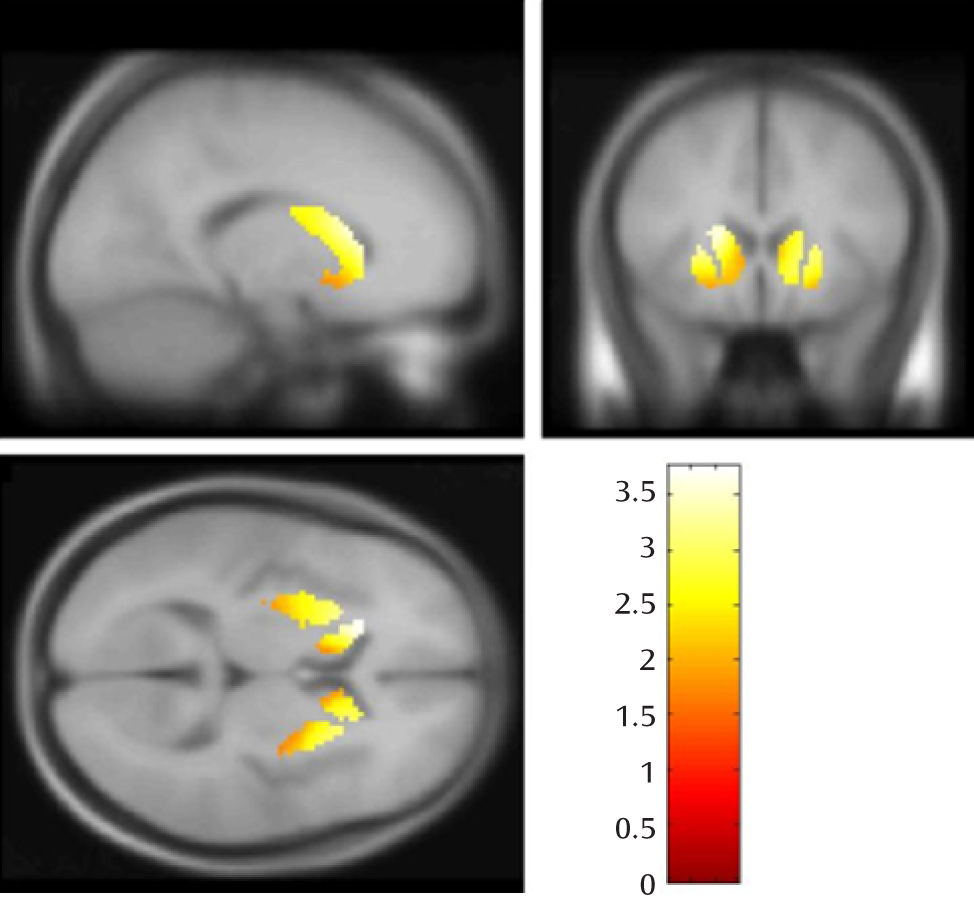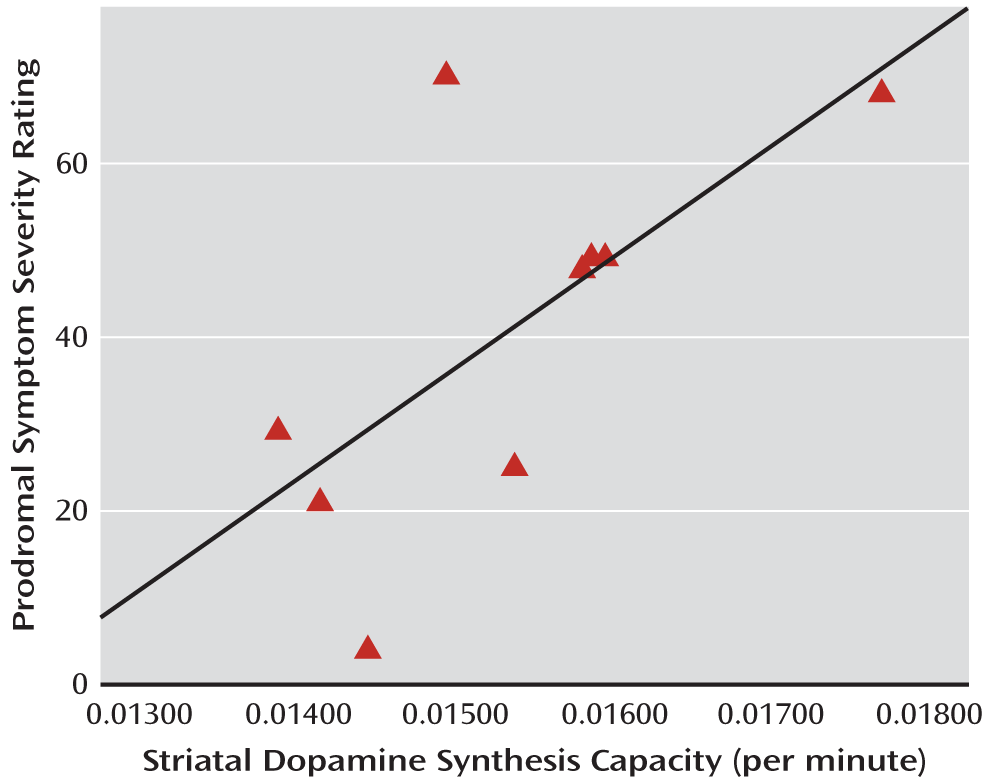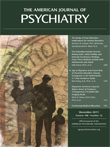Dopamine Synthesis Capacity Before Onset of Psychosis: A Prospective [18F]-DOPA PET Imaging Study
Abstract
Objective:
Method:
Results:
Conclusions:
Method
Participants
Clinical Measures
PET Scanning
Image Analysis
Region-of-interest analysis.
Voxel-based analysis.
Statistical Analysis
Results
Demographic and Clinical Characteristics
| Healthy Comparison Group (N=29) | Psychotic Transition Group (N=9) | Nontransition Group (N=15) | ||||
|---|---|---|---|---|---|---|
| Characteristic | Mean | SD | Mean | SD | Mean | SD |
| Age (years) | 25.6 | 4.0 | 24.9 | 3.1 | 23.8 | 3.7 |
| Parental socioeconomic statusb | 3.0 | 0.9 | 2.9 | 0.9 | 3.0 | 0.9 |
| Cigarettes/day | 2.8 | 5.2 | 5.2 | 5.8 | 5.2 | 5.5 |
| Alcohol (units/week) | 10.0 | 10.5 | 6.5 | 6.8 | 4.8 | 4.6 |
| Comprehensive Assessment of At-Risk Mental Statec | ||||||
| Total score | 40.3 | 22.1 | 35.1 | 20.3 | ||
| Positive score | 8.1 | 3.0 | 7.4 | 4.1 | ||
| Positive and Negative Syndrome Scale | ||||||
| Total score | 50.2 | 21.9 | 44.5 | 12.7 | ||
| Positive score | 13.8 | 5.7 | 11.4 | 3.3 | ||
| Global Assessment of Functioning scale score | 56.0 | 11.3 | 59.6 | 14.2 | ||
Striatal Dopamine Synthesis Capacity

Comparison Between the Psychotic Transition and Healthy Comparison Groups

Comparison Between the Psychotic Transition and Nontransition Groups

Comparison Between the Nontransition and Healthy Comparison Groups
The Relationship Between Striatal Dopamine Synthesis Capacity and Symptoms

Striatal Dopamine Synthesis Capacity in the Schizotypal Personality Disorder Group
Discussion
Findings in the Schizotypal Personality Disorder Group
Methodological Considerations
Specificity of the Findings
Acknowledgments
Footnote
Supplementary Material
- View/Download
- 31.33 KB
References
Information & Authors
Information
Published In
History
Authors
Funding Information
Metrics & Citations
Metrics
Citations
Export Citations
If you have the appropriate software installed, you can download article citation data to the citation manager of your choice. Simply select your manager software from the list below and click Download.
For more information or tips please see 'Downloading to a citation manager' in the Help menu.
View Options
View options
PDF/EPUB
View PDF/EPUBLogin options
Already a subscriber? Access your subscription through your login credentials or your institution for full access to this article.
Personal login Institutional Login Open Athens loginNot a subscriber?
PsychiatryOnline subscription options offer access to the DSM-5-TR® library, books, journals, CME, and patient resources. This all-in-one virtual library provides psychiatrists and mental health professionals with key resources for diagnosis, treatment, research, and professional development.
Need more help? PsychiatryOnline Customer Service may be reached by emailing [email protected] or by calling 800-368-5777 (in the U.S.) or 703-907-7322 (outside the U.S.).

